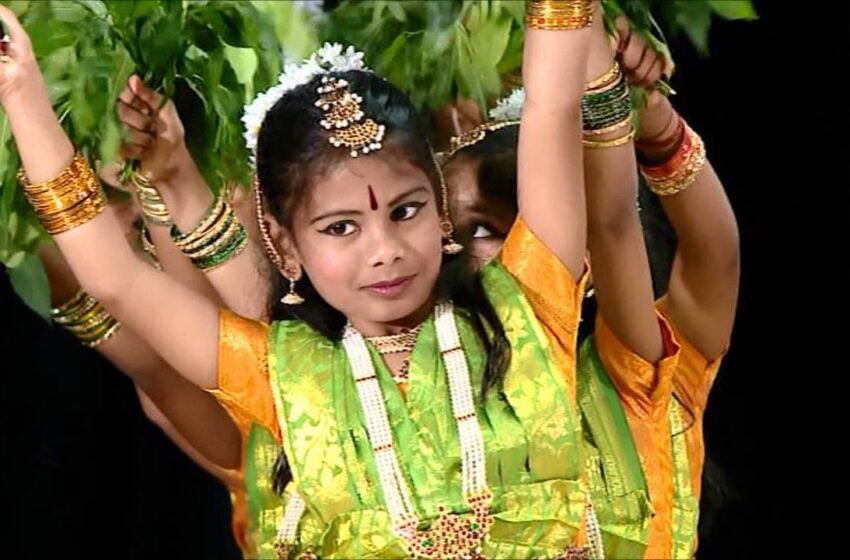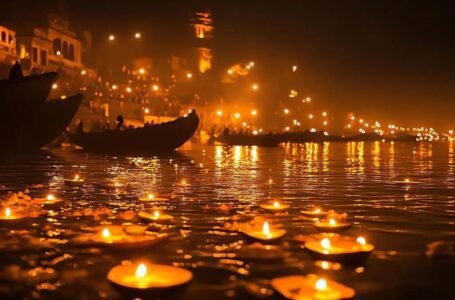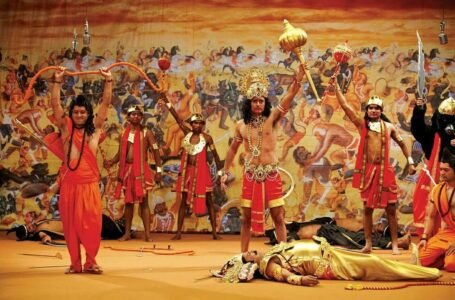Mariamman Dance (Manipur): A Vanishing Ritual of Devotion

Manipur, a land renowned for its vibrant cultural traditions, is home to a rare and nearly extinct ritual dance—the Mariamman Dance. This dance was once an integral part of religious ceremonies, performed in honor of Goddess Mariamman, a deity associated with rain, healing, and protection from epidemics. Although predominantly found in Tamil Nadu, the worship of Mariamman reached Manipur through the migration of Tamil communities, particularly temple priests and traders. Over time, the Mariamman Dance became an essential ritualistic practice among these communities.
Today, however, this sacred dance is rarely performed, with its existence limited to a few ritualistic observances in temples. With changing societal structures and diminishing interest in folk traditions, the Mariamman Dance faces extinction.
This article delves into the origins, religious significance, performance style, costumes, musical elements, and the challenges faced by this unique dance form.
Origins and Religious Significance
The Mariamman Dance is rooted in the worship of Goddess Mariamman, who is believed to be a powerful deity protecting her devotees from droughts, diseases, and misfortunes. The dance was historically performed as a form of devotion and prayer, particularly during times of epidemic outbreaks, to seek divine blessings for health and prosperity.
Mariamman’s worship traces its origins to South India, particularly Tamil Nadu, where she is revered as the Goddess of Rain and Fertility. When Tamil communities migrated to Manipur centuries ago, they brought along their religious traditions, including the Mariamman Dance, which evolved to incorporate regional influences.
In Manipur, the dance was mainly performed during annual temple festivals, especially during the Aadi month (July–August), which marks the peak of monsoon and is considered auspicious for Mariamman worship. However, due to modern influences, these rituals have dwindled over time.
Performance of Mariamman Dance
Unlike many other Manipuri dances that emphasize grace and storytelling, the Mariamman Dance is highly energetic, rhythmic, and spiritual. It is a group dance, with performers engaging in fast-paced movements, symbolizing devotion, surrender, and divine connection.
- Ritualistic Elements
The dance begins with an invocation, where performers offer prayers to Mariamman before starting.
The lead dancer, often a priestess or a senior devotee, takes the center stage, guiding the group through movements that depict rain, purification, and divine energy.
Dancers often enter a state of trance, believed to signify the presence of the goddess.
Devotees walk barefoot on hot surfaces or perform firewalking (in extreme cases), showcasing their faith and endurance.
- Movement and Style
The dance is characterized by swift footwork, circular formations, and rhythmic stamping.
Hand gestures (mudras) play a vital role, often symbolizing rainfall, divine power, and protection.
The dance typically concludes with a climactic offering to the goddess, where devotees present flowers, turmeric, and holy water.
Despite its deep religious significance, modern influences and urbanization have led to the decline of these practices.
Costumes and Ornamentation
The Mariamman Dance features traditional attire that reflects both Tamil and Manipuri cultural elements. The costumes are simple yet vibrant, emphasizing the spiritual nature of the performance.
- Women’s Attire
Women wear bright-colored sarees, primarily in red, yellow, and orange, symbolizing fire, purity, and divine energy.
Their hair Is adorned with jasmine flowers, a common offering to Mariamman.
Gold jewelry, including bangles, necklaces, and anklets, adds to the traditional aesthetic.
- Men’s Attire
Male performers wear dhotis with sacred threads and bare upper bodies, representing purity.
Some also apply sandalwood paste and vermillion on their foreheads as a ritualistic mark.
The attire remains traditional and symbolic, yet the lack of interest in such rituals has made these costumes less commonly seen in modern performances.
Musical Accompaniment
Music plays an essential role in the Mariamman Dance, with traditional South Indian and Manipuri instruments merging to create a distinctive rhythmic pattern.
- Instruments Used
Drums (Dhol & Mridangam) – Provide the energetic beats that guide the dance steps.
Nadaswaram (Wind Instrument) – A temple instrument played to invoke the goddess’s blessings.
Cymbals & Bells – Used to maintain rhythm and enhance the devotional atmosphere.
- Vocal Elements
The performance is often accompanied by devotional songs and chants in Tamil, praising Mariamman.
Singers narrate stories of Mariamman’s miracles through traditional hymns.
Some performances feature call-and-response chanting, where the audience actively participates in reciting prayers and mantras.
This fusion of music, rhythm, and devotion creates an intense spiritual experience for both the performers and the spectators.
Decline and Challenges
Despite its historical and religious significance, the Mariamman Dance is now rarely performed, with only a handful of temples in Manipur preserving the tradition. Several factors have contributed to its decline:
- Urbanization and Changing Religious Practices
Many younger generations have moved away from traditional temple rituals, preferring modern entertainment over folk traditions.
The Tamil diaspora in Manipur has shrunk, leading to reduced cultural transmission.
- Lack of Documentation and Preservation
Unlike Manipuri classical dance forms like Ras Leela, the Mariamman Dance lacks institutional support for preservation.
There are very few written records or video archives, making it difficult for future generations to learn.
- Influence of Other Art Forms
With the rise of Bollywood and contemporary Manipuri dance styles, ritualistic folk performances are fading into obscurity.
Even in temple festivals, the dance is sometimes replaced by simpler devotional singing instead of full-fledged performances.
- Decline in Traditional Festivals
The Mariamman Festival, where this dance was prominently performed, has seen reduced participation due to modern work schedules and migration.
Many devotees now observe smaller, private prayers instead of large-scale public rituals.
Unless efforts are made to document, teach, and revive this sacred dance, it risks becoming completely extinct within the next few decades.
Revival Efforts and the Future of Mariamman Dance
Although the Mariamman Dance is fading, some cultural enthusiasts and temple organizations are working towards its revival.
- Cultural Festivals and Workshops
Some folk art revivalists in Manipur and Tamil Nadu are conducting workshops to educate younger generations about Mariamman worship and its dance traditions.
Local cultural festivals sometimes feature re-enactments of traditional Mariamman performances.
- Digital Documentation
Scholars and cultural preservationists are pushing for video recordings, written manuscripts, and museum exhibitions to archive this dance form.
- Integration into Contemporary Arts
Some artists are incorporating elements of the Mariamman Dance into modern choreography and theatre productions, helping it reach a wider audience.
These efforts provide hope for the survival of this dance, but active participation and community support are crucial for its continuation.
Conclusion
The Mariamman Dance of Manipur, once a powerful ritualistic expression of devotion, is now at risk of disappearing. Its spiritual significance, vibrant movements, and musical richness make it a unique cultural treasure. However, due to urbanization, declining interest, and lack of documentation, it is now performed only in rare temple ceremonies.
To ensure that this ancient tradition is not lost, revival efforts, digital preservation, and cultural awareness must be prioritized. If embraced and celebrated, the Mariamman Dance can once again find its place in the cultural identity of Manipur, bridging the past and present for future generations.


